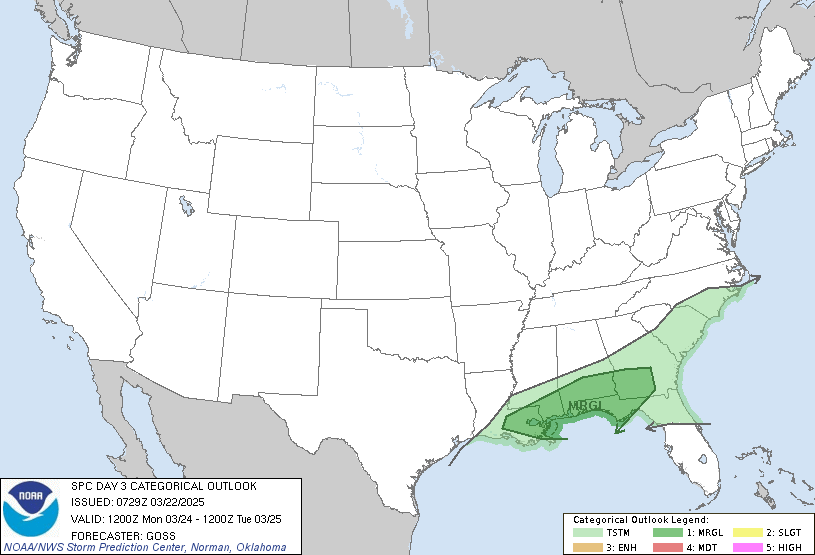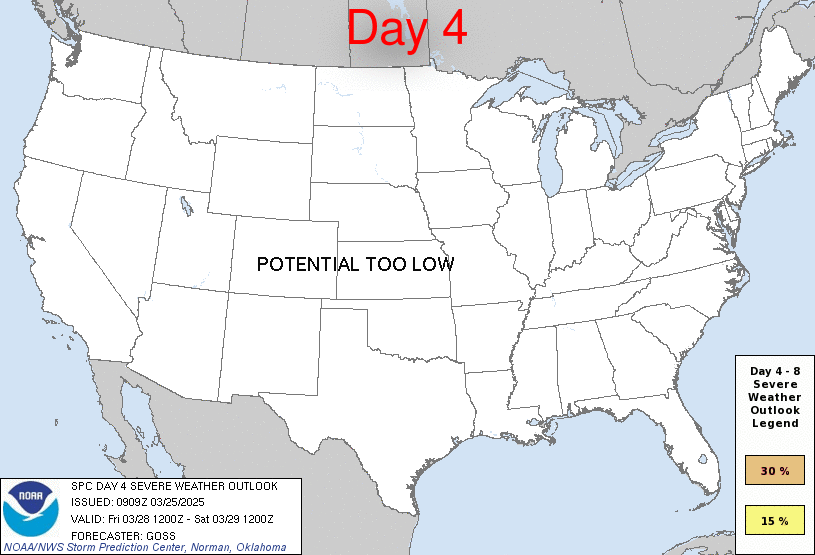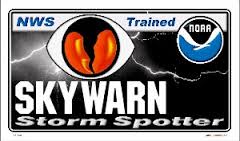RSS Mesoscale Discussions from Storm Prediction Center
SPC 0830Z Day 3 Outlook

Day 3 Convective Outlook
NWS Storm Prediction Center Norman OK
0211 AM CST Fri Dec 26 2025
Valid 281200Z - 291200Z
...THERE IS A MARGINAL RISK OF SEVERE THUNDERSTORMS IN MO/AR TO
TN/KY/OH...
...SUMMARY...
Isolated severe thunderstorms are possible on Sunday into Sunday
night from Arkansas and Missouri into parts of the Ohio and
Tennessee Valleys.
...MO/AR to TN/KY/OH...
Phasing of multiple shortwave impulses will support amplification of
an upper trough, as it progresses from the High Plains to the
North-Central States. This will induce deepening of a surface
cyclone from near the Ozarks to the eastern Great Lakes. Attendant
cold front will accelerate on Sunday night as it quickly moves east
across the OH Valley and south into the Northwest Gulf.
Isolated to scattered elevated convection within the strengthening
low-level warm conveyor should persist, yielding a northern limiter
to potential severe thunderstorms later in the day through Sunday
night. Outside of the likely too cool/stable 00Z NAM, bulk of
preferred guidance suggest weak surface-based destabilization may
occur as a broad plume of upper 50s to low 60s surface dewpoints
becomes established ahead of the front and deepening cyclone. Richer
boundary-layer moisture with at least mid 60s surface dewpoints
should largely hold over the Lower MS Valley and Deep South.
Late afternoon surface-based storms may develop over the Mid-MS
Valley/Ozarks vicinity. Amid broadening large-scale ascent, upscale
growth into a thin but long QLCS seems plausible along the front
given the orientation of the deep-layer winds. Despite only minimal
to meager surface-based instability on Sunday night, intensifying
wind fields throughout the troposphere could support a convective
line with/without lightning. This may yield a threat of sporadic
strong to severe gusts producing at least isolated damaging winds.
..Grams.. 12/26/2025
Read more
Day 4-8 Outlook

Day 4-8 Convective Outlook
NWS Storm Prediction Center Norman OK
0253 AM CST Fri Dec 26 2025
Valid 291200Z - 031200Z
...DISCUSSION...
D4/Monday will feature conditionally favorable strong low to
mid-level flow along/ahead of a cold front moving east across the
Southeast. The intense eastern Great Lakes/southeast ON cyclone
should occlude as a secondary cyclone forms along coastal ME into
the Canadian Maritimes. Guidance is fairly consistent for this time
frame with indications of minimal instability along the trailing
portion of the cold front, as well as diminishing large-scale
ascent/convective signal through the day. Severe thunderstorm wind
probabilities appear at or below 5 percent.
The continental airmass spreading across the Gulf in the wake of the
frontal passage should yield minimal severe potential mid-week.
Towards late week, return flow will support airmass modification
along the western Gulf Coast. The EC-AIFS hints at a low-amplitude
shortwave impulse in the D8/Friday time frame, which could support a
return to non-negligible severe potential.
Read more







